
In this lesson, students will continue to see what actually goes into a performance as they prepare to stage their Prompt Book scene.
- Subject:
- English Language Arts
- Reading Literature
- Material Type:
- Lesson Plan
- Author:
- Pearson
- Date Added:
- 11/02/2020

In this lesson, students will continue to see what actually goes into a performance as they prepare to stage their Prompt Book scene.
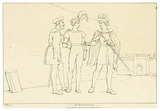
In this lesson, students will take the second in a series of three Cold Write assessments in the narrative genre. The Benchmark Assessment (Cold Write) is an unassisted and unrevised piece of writing whose purpose is to provide a quick gauge of the student’s mastery of the characteristics of a given genre. Today’s Benchmark Assessment (Cold Write) measures and provides a benchmark of students’ mastery of narrative writing. Following this, students will analyze the basic parts of a sonnet and learn how they, too, can create one.
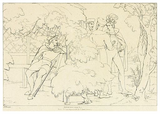
In this lesson, students will gain a fuller understanding of the beauty standards for women in Elizabethan England. This understanding will help them appreciate Sonnets 130 and 18 and how Shakespeare plays with his readers’ expectations.

In this lesson, students will see if humor can transcend time and if their general rules for comedy can still apply to Shakespeare. They will also become familiar with some of Shakespeare’s insults and compliments and investigate the humor in them. Finally, they will study iambic pentameter and read a Shakespearean sonnet.
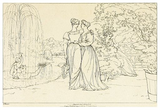
In this lesson, students will look at five passages from a morality handbook called The Good and the Badde . This book was written during the Elizabethan Era, and it tells us a lot about what people considered proper and improper behavior in English society. The sections they read will help them appreciate both Shakespeare’s sonnets andMuch Ado About Nothing .
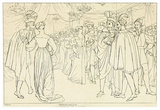
In this lesson, students will be reintroduced to William Shakespeare and his world. To prepare to study his language more closely, they will analyze humor and see if they can identify just what it is that makes something funny.

In this short unit, students will spend three lessons exploring the importance of themes and main ideas in fiction and informational texts. Now would be a good time to have them take an assessment of their reading and writing skills. They'll explore theme through O. Henry's classic short story "The Gift of the Magi" and consider how this piece compares to the main idea in the article "The Proven Power of Giving, Not Getting."

In this unit, students will produce two major pieces of work. The first piece is an argument essay that grapples with one of the core questions of the unit: who are we, and who have we become because of the ways we connect? Students will read, annotate, and discuss several texts together as they consider the issues surrounding this question, and they will also research and annotate independently as they search for more evidence and perspectives to help deepen their ideas. They will also create a museum exhibit as part of a team. The exhibit project will help students identify what's worth preserving about their unique place in history.
PROJECT UNITS
This project unit continues to meet the English Language Arts standards as it also utilizes the learning principles established by the Partnership for 21st Century Skills. It is designed to support deep content knowledge and perseverance through long-term project planning and implementation. In addition, it will help students to recognize, develop, and apply the planning, teamwork, communication, and presentation skills they will use while presenting a final product to their class and/or the greater community. This real-world project-based activity will give students an opportunity to apply the skills they have been learning all year and will guide them to develop the motivation, knowledge, and skills they need in order to be college and career ready.
ACCOMPLISHMENTS
Students write an argument paper where they develop a claim about current culture as it has been influenced by digital connectivity.
Students participate in a group project to create a museum exhibit that captures a unique place, time, and relationship to technology. Students acknowledge the differing perspectives of each group member and use those perspectives to synthesize one cohesive visual argument together.
GUIDING QUESTIONS
These questions are a guide to stimulate thinking, discussion, and writing on the themes and ideas in the unit. For complete and thoughtful answers and for meaningful discussions, students must use evidence based on careful reading of the texts.
What does it mean to be digitally connected?
What are the implications of living in a world where everyone is digitally connected?
How does the availability of instant connectivity shape our relationships?
What does our Internet use reveal about people's needs as humans?
BENCHMARK ASSESSMENT: Cold Read
During this unit, on a day of your choosing, we recommend you administer a Cold Read to assess students’ reading comprehension. For this assessment, students read a text they have never seen before and then respond to multiple-choice and constructed-response questions. The assessment is not included in this course materials.

Today students will explore one another's Digital Native museum exhibits. They'll have a chance to explore each exhibit, and they will use writing to reflect on what they learned in the process of creating the Unit Accomplishments.

In this lesson, you will administer the second Benchmark Assessment (Cold Write) to determine what students have learned this year about argument writing. Students will respond to a prompt, and then you will assess each student’s argument, using the scoring guide, as a measure of progress. Students have had the opportunity to write an argument earlier in the year; this final assessment will show their growth as writers and their mastery of the genre. To see individual students’ progress in argument writing, compare the scoring guides from previous Cold Writes.

In this lesson, students will consider the ways good museum exhibits break their stories into beginnings, middles, and ends to create flow and engagement. They will also work on their museum exhibit.

People often say that mankind should learn from history. Charles Dickens, whose books are considered classics, set his novel A Tale of Two Cities in the past. He wanted his readers to learn from the bloody French Revolution and from the widespread brutality in London. Both cities (Paris and London) offer the reader a glimpse into dark and dangerous times. As students read about Dickens's Victorian setting and learn his view of the French Revolution, they will think about what makes a just world. Students will have a chance to think about their own experiences, and, using techniques they have learned from Charles Dickens, they will do some writing that sends a message about your own world.
ACCOMPLISHMENTS
To complete the unit accomplishments, students will:
Read the Charles Dickens novel A Tale of Two Cities.
Read several short pieces, including a biography of Dickens and excerpts from other literature, to help them understand Dickens’s world and the world of the novel.
Explore new vocabulary to build their ability to write and speak using academic language.
Practice close reading and participate in several role plays and dramatic readings to help them experience the dramatic writing style of Charles Dickens.
Write a vignette and a short narrative piece, and practice using descriptive detail and precise language.
Write a reflection about the meaning of Dickens’s novel.
GUIDING QUESTIONS
These questions are a guide to stimulate thinking, discussion, and writing on the themes and ideas in the unit. For complete and thoughtful answers and for meaningful discussions, students must use evidence based on careful reading of the texts.
How does good storytelling affect the reader, and how can a good story promote change in the world?
What was the Victorian view of gender roles?
How can power be abused?
What is loyalty ? What are the limits of loyalty?
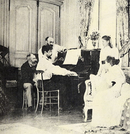
In this lesson, to help you enter into the world of A Tale of Two Cities, you will think about Dickens’s time period and the reasons that he wrote a novel that takes place before he was born.In this lesson, to help them enter into the world of A Tale of Two Cities, students will think about Dickens’s time period and the reasons that he wrote a novel that takes place before he was born.
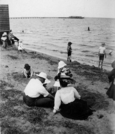
In this lesson, you will consider the relationship between character and caricature, and discuss the ways that Dickens presents his characters—whether realistically or as exaggerations—and begin to explore the reasons he might have had for presenting his characters in this way.In this lesson, students will consider the relationship between character and caricature, discuss the ways that Dickens presents his characters— whether realistically or as exaggerations—and begin to explore the reasons he might have had for presenting his characters in this way.
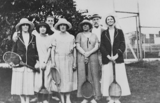
In this lesson, you will focus on writing description that is effective by using concrete, specific details that send a clear impression to your reader.In this lesson, students will focus on writing description that is effective by using concrete, specific details that send a clear impression to their reader.

In this lesson, you will review Dickens’s biography and his concerns as a writer, and you will begin to read and annotate A Tale of Two Cities.In this lesson, students will review Dickens’s biography and his concerns as a writer, and they will begin to read and annotate A Tale of Two Cities.
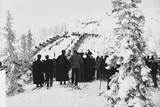
In this lesson, you will talk about the ways in which images send social and political messages to the reader.In this lesson, students will talk about the ways in which images send social and political messages to the reader.
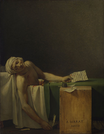
In this lesson, students will review dramatic irony and verbal irony and learn how Dickens is using different kinds of irony to make the readers feel suspense, fear, and horror.
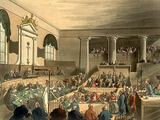
In this lesson, students will discuss the actions of the Revolutionaries in France and discuss whether or not they are being fair and just.
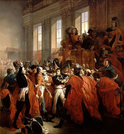
In this lesson, students will discuss what Dickens’s use of Manette’s point of view adds to the novel, and will discuss another central question: How is power abused?